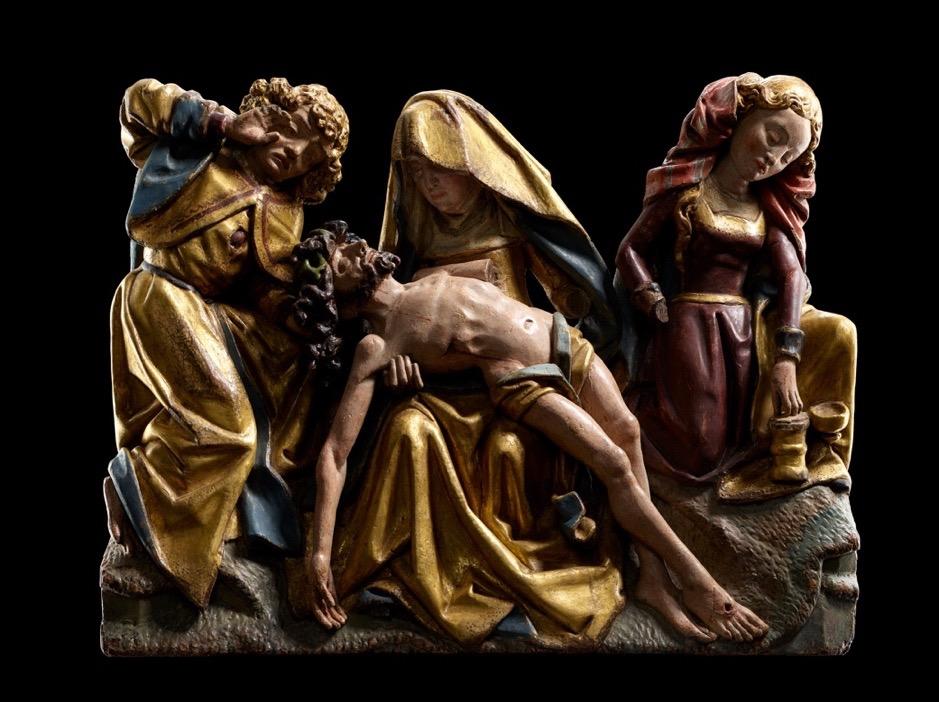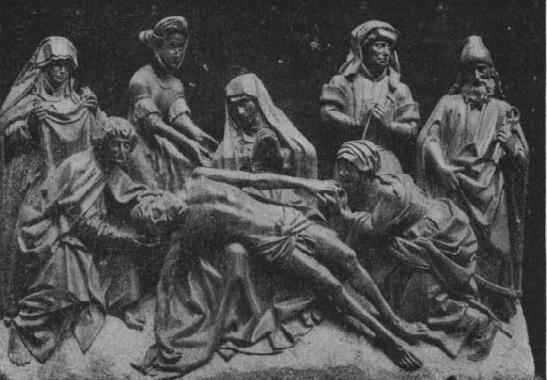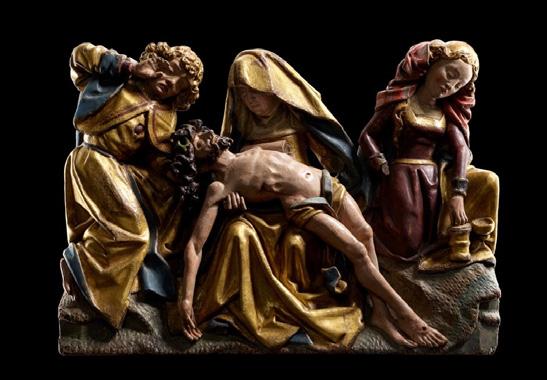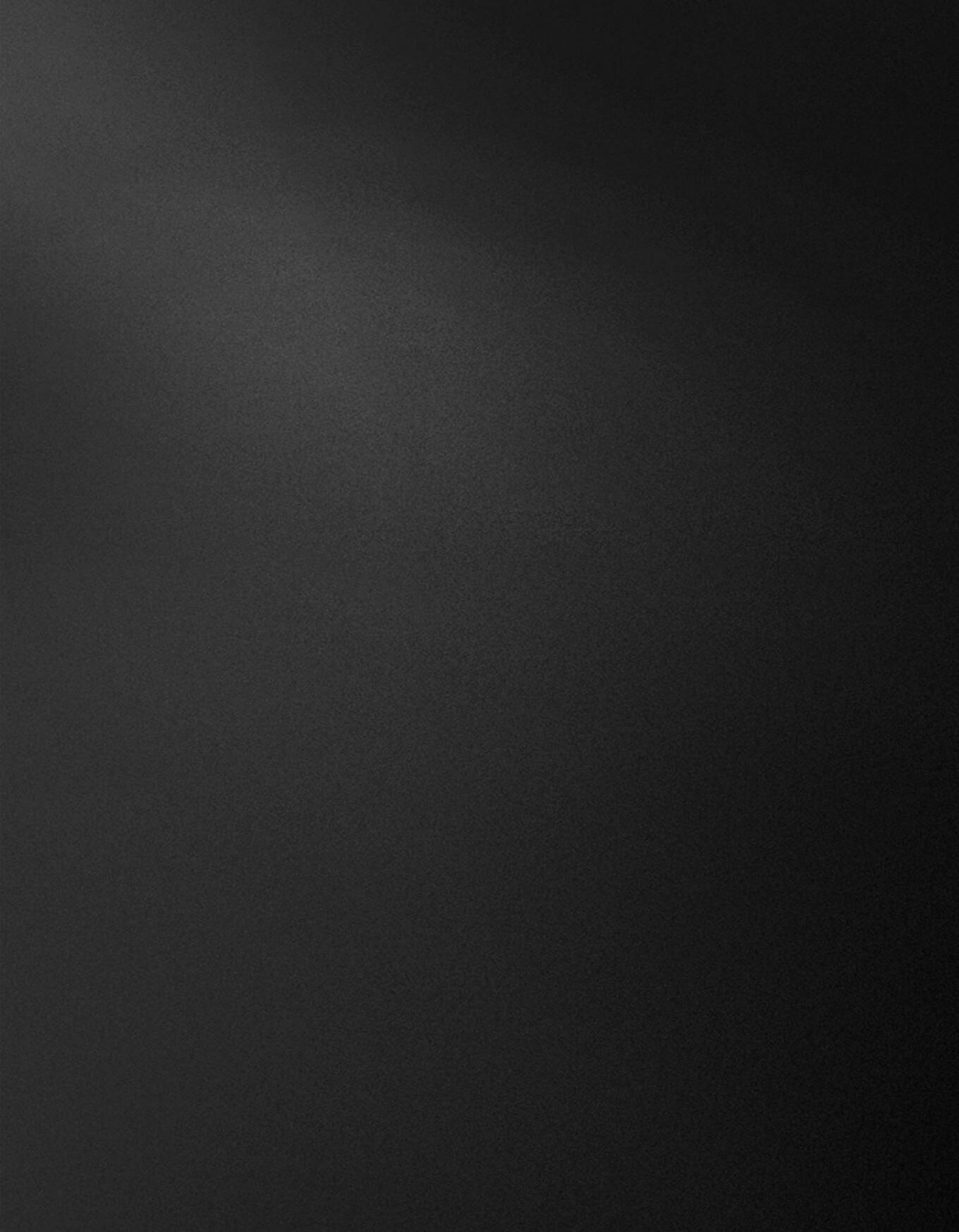
5 minute read
07 Relief of the Lamentation of Christ
Relief of the Lamentation of Christ
07
Advertisement

Relief of the Lamentation of Christ
RELIEF OF THE LAMENTATION OF CHRIST
Flanders (Antwerp or Brussels) Circa 1490
Oak relief with the original gilding and polychromy Height: 36 cm, length: 47 cm, width: 7 cm
Provenance: European private collection
Related Literature: Aubert, Marcel : Description raisonnée des sculptures du Moyen Age, de la Renaissance et des Temps Modernes, vol. 1, Moyen Age (Middle Ages), Paris 1950, p. 278, object 396, ‘Vierge de la Pitié’, fig. 396
Destree, M.J. Recherches sur la sculpture brabançonne, Bulletin de la Société nationale des Antiquaires de France, 1890
Guillot de Suduiraut, Sophie. Sculptures brabançonnes du Musée du Louvre, Bruxelles Malines Anvers XV-XVI siècles, Paris 2001, fig. 41, p. 44, fig. 31, p. 149 An unknown artist carved this exceptional pietà from a block of oak wood. On the underside a non-attributable mark is shown four times. The work depicts one of the most dramatic moments in the Passion and death of Christ.
The figures are arranged on a steep meadow painted a brownish-green, the surface area of which has been structured with punching and stamping tools. The Virgin Mary sits at the centre of the group in a flowing, golden dress with a wealth of folds. A similarly golden cloak with a blue lining is pulled over her head and shades her beautiful but sad face that exudes pain and sensitivity. The emotions expressed capture her role as a mother immediately after the death of her beloved child, the Son of God. Mary bends over Christ who has been placed across on her knees and embraces him lovingly with both arms. Christ is depicted as a handsome, slim man; his naked, immaculate body is marked by the bleeding wound in his side and the stigmata visible on the right foot. Blood pours out of the wounds torn by the thorny twines of the crown mockingly placed on his head. A golden loincloth (perizonium) preserves his modesty.
To the right of the Virgin Mary and her son is Christ’s favourite disciple John (the Evangelist), also in blue and gold. He holds his right arm up to his face in a gesture of grievance and, with his left hand, supports Christ’s head, preventing it from tilting backwards. From this unified composition of the Virgin Mary, Christ and John, Mary Magdalene stands out as the beautiful and graceful young woman holding the ointment vessel, her attribute. She turns away from Mary and is alone with her pain. The coloration of her robe has less gilding and differs slightly from that of Mary and John. All the more charming is her lovely face.
07


Pietà, walnut, 15th century, Brussels, Collection of Paul de Decker, in Joseph Destrée, A propos de l´influence de Rogier van der Weyden sur la sculpture brabançonne, Brussels 1919, fig. 1 (hier versuche ich, ein besseres Foto zu bekommen)
The formally extremely elegant arrangement of the Virgin Mary and the Son of God after the Crucifixion is artistically outstanding. The two lines formed by the Virgin Mary’s cloak that lead from the head downwards, on the right from the elongated arm of Christ and, on the left, from the slightly mannered crossed legs, form a successful triangular composition together with the edge of the sculpture’s base. The work was made in Flanders, probably in Antwerp or Brussels, at the end of the 15th century. At this time both cities were important centers of the arts in the Duchy of Brabant that became part of the House of Habsburg through the line of succession. One of the great artists who had a considerable influence on both the painting and sculpture of the time in this region was Rogier van der Weyden.
Born Rogier de la Pasture in 1400 in Tournai, he is first mentioned in documents in 1435 in Brussels where he later died in 1464. In 1919 the art historian Joseph Destrée described van der Weyden’s function as a role model in his publication “A propos de l’influence de Roger van der Weyden (Roger de la Pasture) sur la sculpture brabançonne” and illustrated this with a Pietà made of walnut that was made in Brussels in the 15th century.
Pietà, walnut, 15th century, Brussels, Collection of Paul de Decker, in Joseph Destrée, A propos de l´influence de Rogier van der Weyden sur la sculpture brabançonne, Brussels 1919, fig. 1 (hier versuche ich, ein besseres Foto zu bekommen)
Through their powerful expressiveness, the composition and facial and bodily gestures of the figures capture the emotions of those depicted and are very much in keeping with the religious mind-set of the late Middle Ages. The new iconography developed by van der Weyden was well received and, over the following few decades, was widely adopted in all artistic disciplines. Repeated in one workshop and the next, his formal language was also translated in totally different media, such as sculpture.
The definitive determination of the sculpture’s place of origin may be found in the marks added to the underside.
What do these marks mean? In the mid 15th century, the guilds that oversaw the work of sculptors introduced strict regulations, according to which only seasoned oak or walnut was to be used by a sculptor for his work. After examination, carvings were given a clearly visible ‘guarantee stamp’ (marque de garantie). Painters, generally belonging to the Guild of Saint Luke, were then responsible for painting and gilding the figures. The sale of artworks was only possible after a final examination by the city administration, following which a corresponding mark was added. The oak used for the Pietà obviously met the quality criteria of the wood assessor. This is shown by the four marks on the underside of the pedestal. In each case they comprise a square, measuring c. 0.5 x 0.5 cm, divided into four compartments. The marks shown in this case are, however, unknown.
Bitte austauschen bzw. Ergänzen in der „Related literature:“ Destree, Joseph, Etude sur la sculpture brabançonne au Moyen Age, Brussels 1894
Id., A propos de l’influence de Roger van der Weyden (Roger de la Pasture) sur la sculpture brabançonne, Brussels 1919, pp. 1-11
07







